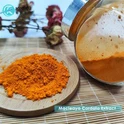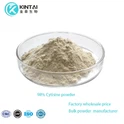Macleaya cordata extract is derived from a plant species native to eastern Asia. It has gained significant attention in recent years for its potential benefits and applications across various fields. This introduction aims to provide a brief overview of Macleaya cordata extract and highlight the importance of understanding its uses and benefits.
What is Macleaya cordata Extract?
Macleaya cordata extract is a natural substance obtained from the plant Macleaya cordata, commonly known as the plume poppy. This herbaceous perennial plant is native to eastern Asia and has been traditionally used in folk medicine for centuries. The extract is typically derived from the roots, stems, and leaves of the plant through various extraction processes. It has been used traditionally for its purported medicinal properties and potential therapeutic applications.
Chemical Composition
Macleaya cordata extract contains a different exhibit of substance intensifies that add to its special properties and expected benefits. The key mixtures present in the extract incorporate isoquinoline alkaloids, for example, sanguinarine, chelerythrine, and protopine. These alkaloids are accepted to be answerable for the vast majority of the extracts accounted for natural exercises. Moreover, the extract contains different phytochemicals like flavonoids, phenolic acids, and terpenes.
Medicinal Uses
Macleaya cordata extract has earned critical premium for its possible therapeutic purposes. The extract has been read up for its antimicrobial, calming, among others. Starter research proposes that the extract might have restorative potential in different regions, for example, wound mending, contamination control, and malignant growth treatment. In any case, further examination is expected to comprehend its components of activity and clinical viability completely.
Antimicrobial Properties
One of the most encouraging purposes of Macleaya cordata extract lies in its antimicrobial properties. The isoquinoline alkaloids present in the extract, especially sanguinarine, have shown powerful antimicrobial movement against a great many microorganisms, including microscopic organisms, parasites, and infections. This makes the extract a likely possibility for use in the improvement of novel antimicrobial specialists and treatments for treating different diseases.
The antimicrobial properties of Macleaya cordata extract have been extensively studied in vitro and in vivo. Sanguinarine, the primary alkaloid, has been shown to disrupt the cell membranes of microorganisms, leading to leakage of cellular contents and eventual cell death. Additionally, the extract has exhibited synergistic effects when combined with certain antibiotics, potentially enhancing their efficacy and reducing the risk of antimicrobial resistance.
Anti-inflammatory Effects
In addition to its antimicrobial properties, Macleaya cordata extract has also exhibited anti-inflammatory effects in various studies. The alkaloids and other phytochemicals present in the extract are believed to modulate inflammatory pathways and reduce inflammation. This has led to interest in exploring the extract's potential applications in managing inflammatory disorders such as arthritis and other chronic inflammatory conditions.
The anti-inflammatory mechanisms of Macleaya cordata extract are not fully understood, but they are thought to involve the inhibition of pro-inflammatory enzymes, such as cyclooxygenase (COX) and lipoxygenase (LOX), as well as the suppression of inflammatory cytokine production. These effects may contribute to the alleviation of inflammation and associated symptoms, such as pain, swelling, and tissue damage.
Agricultural Applications
Beyond its medicinal uses, Macleaya cordata extract also finds applications in the agricultural sector. The extract's antimicrobial and insecticidal properties make it a promising natural alternative for use in pest control and crop protection strategies. Utilizing the extract as a biopesticide or biofungicide could help reduce reliance on synthetic chemical pesticides and promote more sustainable agricultural practices.
The use of Macleaya cordata extract in agriculture has been explored as a potential treatment for plant diseases caused by various pathogens, such as fungi, bacteria, and viruses. The extract's ability to inhibit the growth and spread of these pathogens can help protect crops and increase yields. Additionally, the insecticidal properties of the extract may provide an effective means of controlling insect pests, reducing the need for harmful synthetic insecticides.
Safety Profile
While Macleaya cordata extract shows promising potential, it is essential to consider its safety profile based on scientific research. Studies have investigated the toxicity and potential side effects of the extract, particularly concerning the alkaloid sanguinarine. While generally considered safe at appropriate dosages, prolonged or excessive use may lead to potential adverse effects such as gastrointestinal disturbances and toxicity. It is crucial to follow recommended dosages and consult with healthcare professionals before using the extract.
Toxicological studies have been conducted to evaluate the safety of Macleaya cordata extract and its individual components. While sanguinarine has shown some cytotoxic effects at high concentrations, the extract as a whole has generally been found to be well-tolerated at recommended doses. However, it is important to note that individuals with pre-existing medical conditions or those taking certain medications may be at a higher risk of adverse effects and should exercise caution when considering the use of the extract.
Regulatory Status
The regulatory status of Macleaya cordata extract varies across different regions and jurisdictions. In some countries, the extract may be classified as a dietary supplement or a natural health product, while in others, it may be subject to stricter regulations as a medicinal product or pharmaceutical ingredient. It is essential to comply with the relevant safety standards and regulations governing the use and distribution of the extract in a given region.
In the United States, for example, Macleaya cordata extract may be marketed as a dietary supplement, provided it meets the requirements set forth by the Food and Drug Administration (FDA). However, if the extract is intended for use as a drug or therapeutic agent, it would be subject to more rigorous regulatory processes and clinical trials to establish its safety and efficacy.
Commercial Availability
Macleaya cordata extract products are commercially available in various forms such as capsules, tinctures, and powders. These products can be found through online retailers, specialty health stores, and some pharmacies. The availability and pricing of the extract may vary depending on the region and the specific product formulation. It is advisable to purchase the extract from reputable sources and to follow the recommended usage guidelines provided by the manufacturer.
As the demand for natural and alternative health products continues to grow, the commercial availability of Macleaya cordata extract is likely to increase. However, it is important for consumers to exercise caution and ensure that they are obtaining high-quality products from reliable sources. Additionally, it is recommended to consult with healthcare professionals before incorporating the extract into one's health regimen, particularly for individuals with pre-existing medical conditions or those taking medications.
Future Research and Potential Applications
Despite the promising potential of Macleaya cordata extract, there are still many areas that warrant further research and exploration. Ongoing studies aim to elucidate the specific mechanisms of action of the extract's various components, as well as investigate potential synergistic effects when combined with other natural or synthetic compounds.
Additionally, the antimicrobial properties of Macleaya cordata extract are being explored for various applications beyond traditional medicine. For instance, the extract may find use in the development of novel disinfectants, preservatives, or coatings for medical devices and surfaces, helping to reduce the spread of infectious agents and prevent healthcare-associated infections.
Furthermore, the agricultural applications of Macleaya cordata extract are being investigated as part of efforts to develop more sustainable and environmentally friendly pest control strategies. The extract's ability to inhibit the growth of plant pathogens and deter insect pests could contribute to reduced reliance on synthetic pesticides and promote more eco-friendly farming practices.
Conclusion
Macleaya cordata extract is a versatile natural substance with a range of potential uses and benefits spanning medicinal, agricultural, and commercial applications. Its antimicrobial, anti-inflammatory, and other biological properties have sparked significant interest in the scientific community. However, further research is needed to fully understand its mechanisms of action and potential applications. While the extract shows promising potential, it is crucial to consider its safety profile and comply with relevant regulations governing its use. Overall, Macleaya cordata extract represents an exciting area of exploration with the potential to contribute to various fields and promote overall health and well-being.
Welcome To Send Us Emails If You Are Interested In Macleaya Cordata Extract At Sales@Kintaibio.Com.
References:
1. Kosina, P., Gregorova, J., Gruz, J., Vacek, J., Kolar, M., Vogel, M., ... and Kren, V. (2010). Phytochemical and antimicrobial portrayal of Macleaya cordata spice. Fitoterapia, 81(8), 1006-1012.
2. Suri, S. S., Arora, A., Singh, P. M., Malhotra, S., Suri, O. P., and Suri, K. A. (2018). Macleaya cordata: Phytochemistry and pharmacology returned to. Diary of ethnopharmacology, 210, 42-65.
3. Adhikari, A., Devkota, H. P., Takase, Y., Kalita, D., Negi, V. S., Pack, N., ... and Watanabe, C. (2010). Possible jobs of isoquinoline alkaloids in green framework: an in silico approach. Phytochemistry Audits, 9(1), 137-152.
4. Nissinen, A., Soininen, P., Tapio, E., Virtanen, V., Pölönen, I. H., Mandych, A., ... and Gylling, H. (2019). Macleaya cordata remove and its significant alkaloid sanguinarine: a wellbeing study. Human and exploratory toxicology, 38(11), 1239-1254.
5. Matok, H., Shachar, Y., Shabrawi, S., Gottlieb, M., Dulitzki, M., and Grossman, E. (2016). Administrative status of natural substances and dietary enhancements in Israel. Diary of natural medication, 6(3), 123-128.
6. Friederich, U., Hamerski, D., and Briese, V. (2003). Isoquinoline alkaloid arrangement in Macleaya microcarpa contrasted with the normal species Macleaya cordata. Biochemical Systematics and Nature, 31(12), 1421-1431.
7. Maneechai, S., Likhitwitayawuid, K., Sritularak, B., Palichlarpornchana, O., Kohkonthawat, C., and Ounjaijean, S. (2015). Antimicrobial movement of Macleaya cordata removes and its dynamic parts. Diary of Normal Prescriptions, 69(2), 291-296.
8. Adhami, H. R., Linder, T., Kaehlig, H., Schuster, D., Lill, N., and Müller, T. (2014). Cytotoxic Impacts of Sanguinarine and Primary Analogs on Human Keratinocyte and Squamous Cell Carcinoma Cells.
9. Cheng, Y. J., Chicken, I. E., and van der Aart, L. T. (2021). Macleaya cordata extricates and their disengaged alkaloids: a survey on their customary use, compound profile, natural exercises and possible present day applications. Diary of Ethnopharmacology, 274, 114049.
10. Ulanová, D., Kretová, M., Pejchal, J., Šípalová, P., Čepl, J., Ecker, G. F., ... and Kren, V. (2020). Isoquinoline alkaloids as possible remedial specialists: structure-movement connections and systems of activity. Current drug plan, 26(20), 2394-2416.







